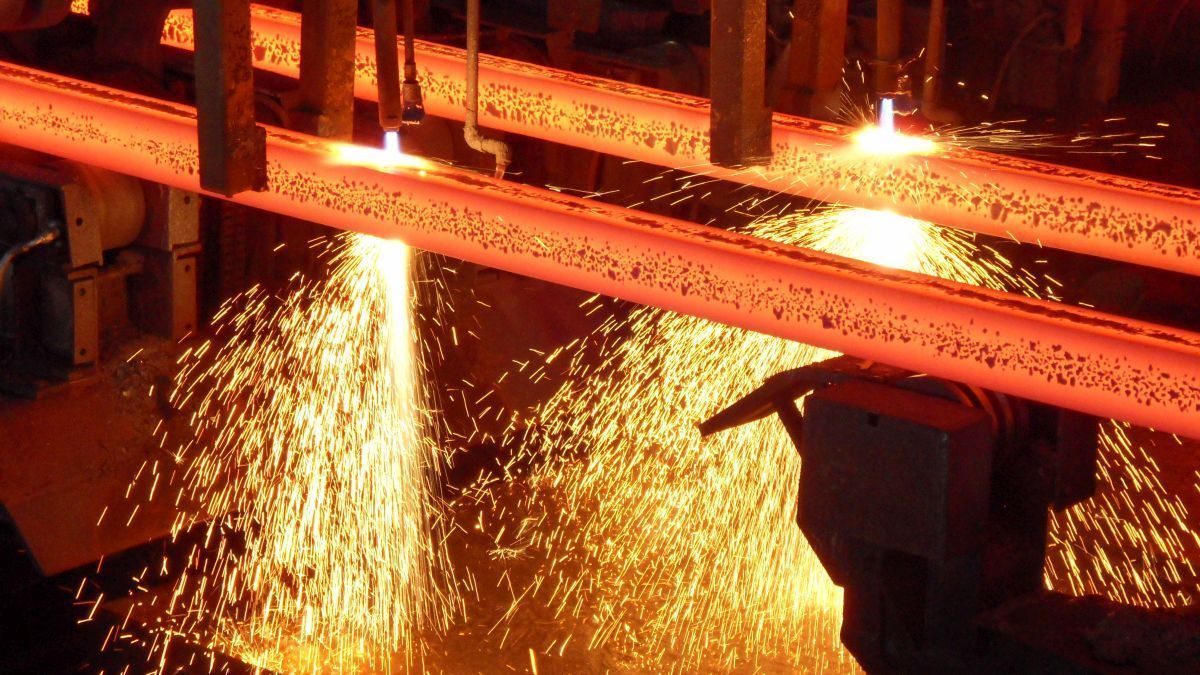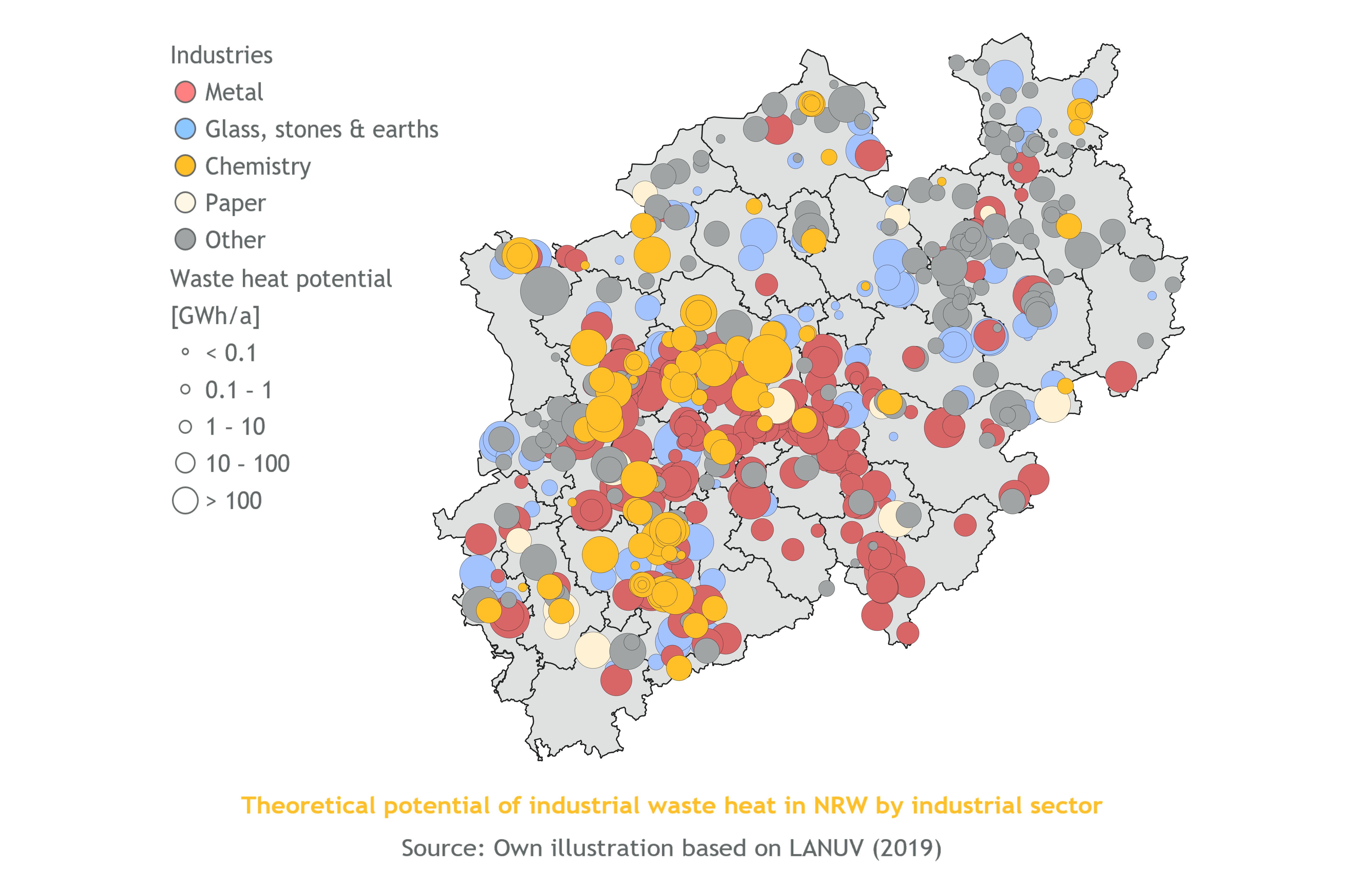
Technically unavoidable waste heat from industrial processes can be and become an important component of the heating transition. In a new analysis, the EWI shows the potential for integrating waste heat for the decarbonization of heating networks and estimates the industry-specific development of the potential. According to the results of the analysis, a decreasing overall potential for waste heat in NRW is possible.
In the analysis “Prospects for the Integration of Waste Heat into the heat supply in NRW”, a team from the Institute of Energy Economics at the University of Cologne (EWI) analyzes the regulatory framework for waste heat and draws up a list of criteria for the technical and economic implementation of waste heat projects. Both existing and new waste heat potentials in NRW and their sector-specific development are presented. The analysis was carried out as part of the EWI’s “Heat Transition Research Program” and was funded by the Gesellschaft zur Förderung des Energiewirtschaftlichen Instituts an der Universität zu Köln e. V. (Society for the Promotion of the Institute of Energy Economics at the University of Cologne).
In 2022, around 68% of industrial final energy consumption in Germany was attributable to process heat, for example for smelting iron ore in steel production or drying freshly pressed paper webs in paper production. The heat applied in the process is often not fully utilized due to physical and technical limitations. Instead, it is released into the environment as waste heat after actual use. This technically unavoidable waste heat could instead be fed into heating networks and thus used for decarbonization. Particularly in NRW with its many energy-intensive industrial companies, high population density and existing heating networks, the use of technically unavoidable waste heat can be a building block for the heat transition.
According to a study by Sarah Brückner from 2016, NRW had 47 percent of the waste heat potential in Germany. sWhile the industrial waste heat potential could decrease significantly in the future due to decarbonization and the associated process conversions and efficiency gains, new potential sources of waste heat such as electrolysers and data centers are expected to emerge in NRW.
The term “unavoidable waste heat” has been redefined in regulatory terms and equated with renewable energies. This has given it a new significance for decarbonization and thus a new market value. However, to date there is neither a uniform specialist law for the use of waste heat nor a uniform legal definition of unavoidable waste heat.
The use of waste heat depends on both technical and economic criteria. From a technical point of view, the waste heat properties, such as waste heat quantity and temperature level, spatial and temporal availability and the possibility of process integration are decisive. In principle, factors from the perspective of both the industrial company and the heat supplier must be mentioned for the economic assessment. For heat suppliers, for example, the counterparty risk is particularly relevant, which describes the possible loss of the waste heat source before the end of depreciation of the investments made to connect it to the heating network.
Due to the high density of industry, NRW has a high theoretical potential for industrial waste heat overall. According to the “Industrial Waste Heat Potential Study” by the State Agency for Nature, Environment and Consumer Protection of North Rhine-Westphalia (LANUV), the theoretical total potential is approx. 88 to 96 TWh/a. The majority of the estimated waste heat potential is generated in the metal production and processing (54%), glass production and processing of stone and earth (17%) and chemical industries (11%). “How the individual industrial sectors implement the energy transition will be decisive for the development of waste heat potential. Waste heat potentials can change over time as a result of process changes, energy efficiency measures and economic development,” says Tobias Sprenger, Manager and Head of the heat transition research program at the EWI, who prepared the analysis with Polina Emelianova and Maximilian Walde.

There is also new waste heat potential from electrolysers and data centers. The theoretical waste heat potential was estimated for electrolysers. According to the estimate, the electrolysis projects announced to date in NRW have a theoretical waste heat potential of up to 0.63 TWh/a in 2030. Further investments in regional electrolysis capacity and in new data centers designed to use waste heat could increase the future waste heat potential in NRW.